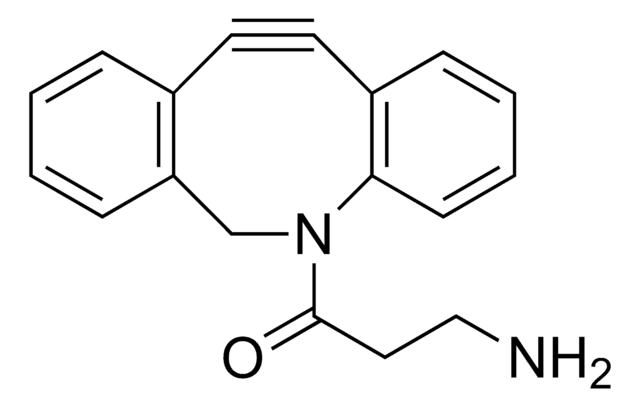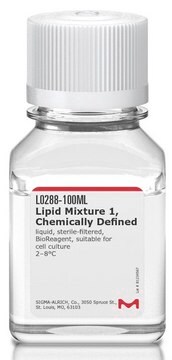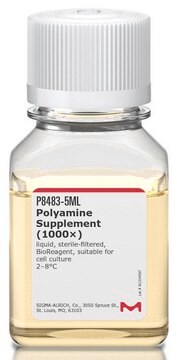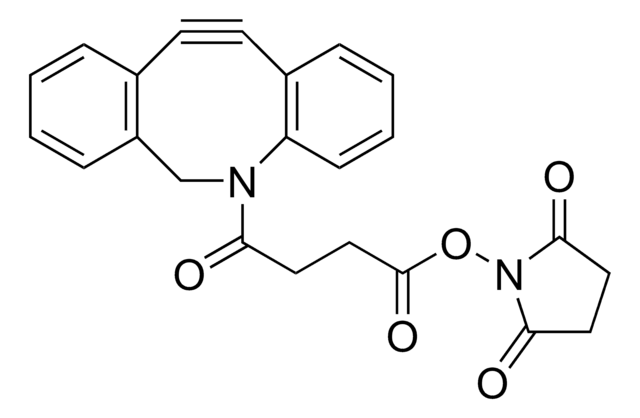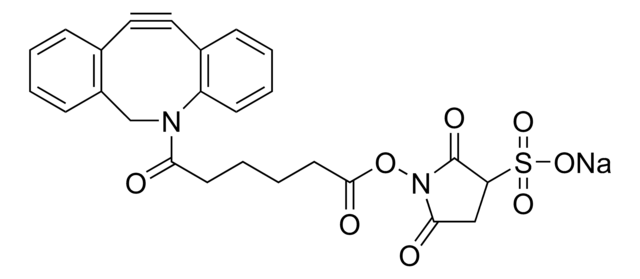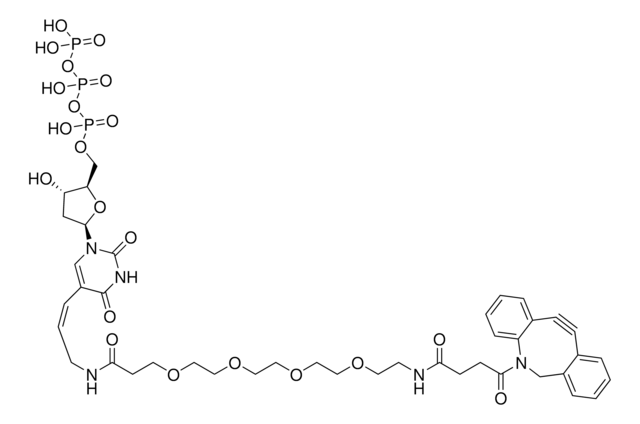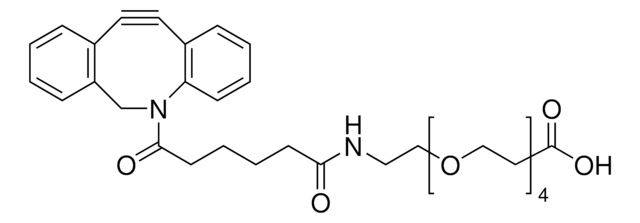760749
Dibenzocyclooctyne-PEG4-biotin conjugate
for Copper-free Click Chemistry
Sinonimo/i:
Polyethylene glycol, DBCO-PEG4-biotin
About This Item
Prodotti consigliati
Stato
solid
Impiego in reazioni chimiche
reaction type: click chemistry
Temperatura di conservazione
−20°C
Stringa SMILE
O=C(CCCC[C@@H]1SC[C@@H]2NC(=O)N[C@H]12)NCCOCCOCCOCCOCCC(=O)NCCC(=O)N3Cc4ccccc4C#Cc5ccccc35
InChI
1S/C39H51N5O8S/c45-35(12-6-5-11-34-38-32(28-53-34)42-39(48)43-38)41-18-20-50-22-24-52-26-25-51-23-21-49-19-16-36(46)40-17-15-37(47)44-27-31-9-2-1-7-29(31)13-14-30-8-3-4-10-33(30)44/h1-4,7-10,32,34,38H,5-6,11-12,15-28H2,(H,40,46)(H,41,45)(H2,42,43,48)/t32-,34-,38-/m0/s1
LNHSQAOQVNHUGL-QRBHCBQLSA-N
Descrizione generale
Applicazioni
Caratteristiche e vantaggi
Codice della classe di stoccaggio
11 - Combustible Solids
Classe di pericolosità dell'acqua (WGK)
WGK 3
Punto d’infiammabilità (°F)
Not applicable
Punto d’infiammabilità (°C)
Not applicable
Scegli una delle versioni più recenti:
Possiedi già questo prodotto?
I documenti relativi ai prodotti acquistati recentemente sono disponibili nell’Archivio dei documenti.
I clienti hanno visto anche
Articoli
Copper-free click chemistry is an alternative approach to click chemistry that proceeds at a lower activation barrier and is free of cytotoxic transition metal catalysts.
Il team dei nostri ricercatori vanta grande esperienza in tutte le aree della ricerca quali Life Science, scienza dei materiali, sintesi chimica, cromatografia, discipline analitiche, ecc..
Contatta l'Assistenza Tecnica.
